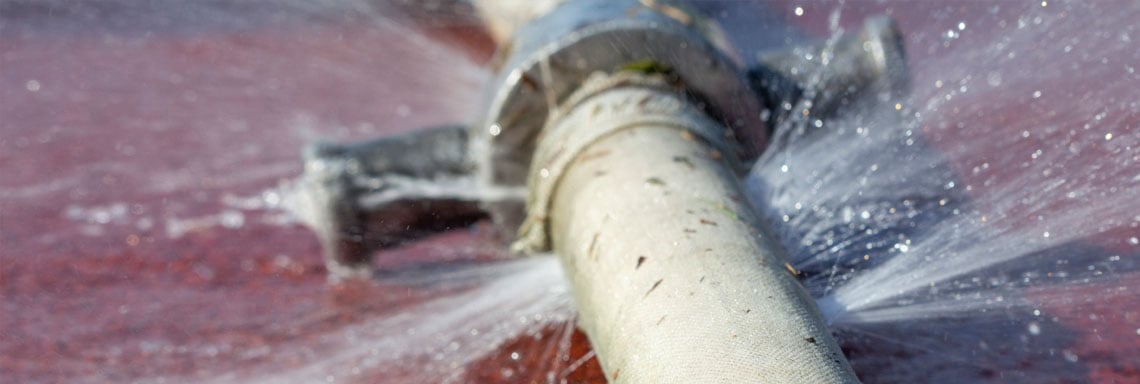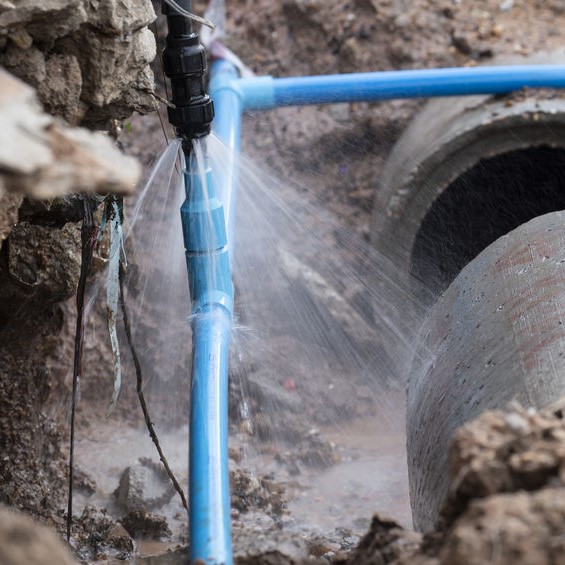Dealing with a Sudden Pipe Burst
Dealing with a Sudden Pipe Burst
Blog Article
The publisher is making a number of good pointers on What to Do When a Pipe Bursts in Your Home in general in this post which follows.

The prompt feedback when a pipeline bursts in your home is to go in complete panic setting. Don't worry; you are not the only one as the majority of homeowners feel by doing this, as well. Besides, this concern can result in considerable residence damages.
Though it might be difficult to do, remain calm and gathered. Making hasty decisions can make the situation even worse. To assist you out, here are six immediate steps you should take when dealing with burst pipelines. Keep in mind, expertise is power so researching this before it occurs will allow you to remain in control also in the middle of a huge emergency water leak:
Conduct a Quick Visual Assessment
Though your impulse is to turn off the valve as soon as possible, time out for a while as well as carry out a quick visual examination of the website. Try and spot where the water is dripping from. Doing so will allow you to advise the plumber on what location to consider. This less-than-a-minute examination will save you time and also aid your plumber promptly recognize the origin.
Shut the Main Water Shutoff
After a quick check, you can currently turn off the primary water supply. Maintaining water running will lead to massive damage. The last thing you need is significant flooding warps wood floorings or damages appliances as well as furniture. You also intend to avoid mold growth. Shut off the valve and also call the plumber for an emergency inspection.
Drain the Pipeline
As you wait on the plumber to show up, drain pipes the water flowing in the pipelines. Just run your faucet and also purge the toilet to ensure that whatever water is staying will completely drain. When you do this, the leakage will quit going where it's not intended to be to begin with. Keeping that, the plumber can likewise function much faster. Just do not forget to shut down the tap after the pipes are drained.
Attempt a DIY Pipeline Repair
If you've got handyman skills, do a small fixing like sealing a tiny fracture. You can get piping sealant to make quick fixes. Be cautious with the application, so you don't get worse any issues. If you require to tighten up a couple of nuts and also bolts, stand up to need to over-tighten as this can cause leaks down the line.
Do away with Any Kind Of Standing Water
Don't let any kind of standing water sit for also. It will lead to more damages if water permeates into your floors or rug. You also don't want it to stream right into vital items like electronics. Clean up the water and dry the area off right away. If you have electric fans, keep them running to flow the air and also promote faster drying.
Call a Reputable Plumber
If you feel unsure about your abilities to take care of a little fracture or little leakage, it is best to call an expert plumber. When it pertains to fixings, they have the expertise, abilities, devices, and also experience to obtain points done quickly. Dabbling with pipelines is not a joke as it can cause more problems if done improperly. Finding a trustworthy plumbing solution guarantees your water leakage is repaired efficiently and efficiently.
A Frozen Pipe Has Burst, What Are The Next Steps?
How to Tell if Pipes are Frozen
It’s important to catch frozen pipes early to prevent damages. Typically, you will be able to boost your thermostat or talk a professional plumber before any damage occurs. However, here are a few signs that will help you identify if your pipe is frozen.
No Water – An obvious sign that you have frozen pipes is if there’s a complete lack of water coming from your faucets or fixtures. Frost – If you can gain access to view your pipes, check to see if there is visible frost on them. Take note of which parts of the pipe has frost. Smell – If your pipes freezes, it will block food and waste down your drain, causing a backup and your room to begin to have a bad smell. How to Tell if a Frozen Pipe has Burst
Inspect the Inside of the Building. Go through each area of the building and look for actively dripping water and signs of water damage. Examine any exposed pipes and check them for frost or condensation. Especially keep an eye on rooms such as bathrooms, kitchens, laundry rooms, and unheated areas of the building. Turn on the faucets and flush your toilets. Ensure they are working and the water has no discoloration or smell to it. If there is only a slow trickle of water coming out, or no water at all, this might mean a frozen pipe has burst. Check your water meter. If all fixtures in the building are off and it still shows movement, this could be a sign of a burst. Check the exterior of the building. Look for water building up anywhere out of the ordinary, or sinkholes in your yard. Remove Water Right Away
It is important to clean up water right away to prevent mildew and mold buildup. You will need towels, buckets, mops, and a wet/dry vacuum. Do not wait for the plumber to remove the water for you, the longer you wait the more likely it is that you’ll get mold or severe water damage.
Avoid Extreme Temperatures
First off, make sure the temperature in your home is no lower than 55*F. If you are going to be gone for a long time, turn off your water with the shut off valve to prevent freezing and bursting.
Don’t Leave Still Water in Pipes
When the weather gets too cold, you should let water drip from your faucet. While the dripping might be irritating, this will help prevent water from freezing. You can detect a frozen pipe if the faucet stops working, or the toilet doesn’t refill.
Taking Precautions with Frozen Pipe Damage
A burst pipe is one of the most common issues people face at home. There can be a number of reasons why pipes burst in harsh climate conditions such as extremely cold temperatures. Low to freezing temperatures can freeze the pipes, causing there to be frozen pipe damage and leading them to burst. Regardless of the type of pipes – whether they be metal or plastic, they can still expand or burst and cause water damage to your home. A burst pipe also requires a significant amount of costs in repairs. This is why it’s important to take all the safety measures to prevent pipes from bursting.
Below are some frequently asked questions and helpful steps to take to safely solve any problems you may be experiencing with your pipes at home.
What to Do When a Pipe Bursts:
Turn off the main water supply Contact a professional Quickly remove and clean excess water to avoid further water damage. Take pressure off pipes by draining the faucets Circulate warm air in your home to slowly thaw pipes Use a repair sleeve to temporarily cover the damaged area of the pipe https://jenkinsrestorations.com/frozen-pipe-has-burst-whats-next/

I stumbled upon that content on What to Do When a Pipe Bursts in Your Home when doing a search on the search engines. Sharing is nice. Helping people is fun. Thanks for your time. Come back soon.
Trusted help? Ring now. Report this page